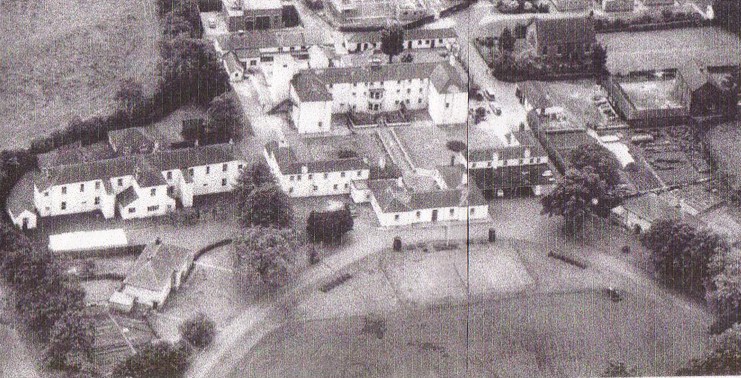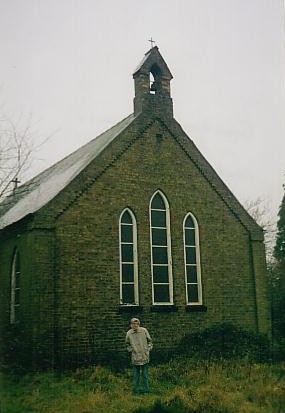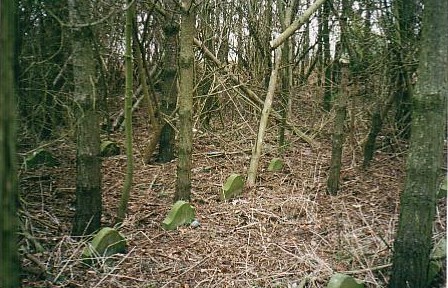Hide
Caistor Poor Law Union
hide
Hide
Poorhouses, Poor Law, etc.
- Before the Poor Law Amendment Act reforms of 1834, Caistor had a "Society of Industry". Established in 1800 under the Gilbert Act by William DIXON, originally 20 parishes united to combine their efforts to deal with the poor. Eventually 53 parishes joined the Society, making it the largest such union in the country. In 1800 construction started on a Workhouse in Caistor west of the city on nine acres of land donated by the Lord of the Manor and the freeholders of Caistor. Called the House of Industry, it was completed in 1803 and housed, at that time, 24 adults and 18 children. DIXON considered his establishment a "School of Industry and Charity."
- After the Poor Law Amendment Act reforms of 1834, the Caistor Poor Law Union was formed on 13th November 1836 to serve the needs of 76 local parishes covering 286 square miles. The new Caistor Union took over the existing Work House and the "Society of Industry" was dissolved. Over the years, an entrance block was added (circa 1837), a fever ward (1842), a school (1863-4) and a chapel (1865-6) dedicated to Saint Lawrence. The Workhouse had a graveyard west of the chapel. An infirmary was added in 1871.
- The Caistor Poor Law Union was originally divided into three Registration Sub-Districts: Grimsby, Caistor and Market Rasen.
- In 1891, the district was split in two and the Grimsby Poor Law Union and Registration District established. The Grimsby sub-district had grown phenominally since 1834. In 1891, the Grimsby Reg. Dist. had a population of 61,749, with only 16,977 remaining in the now smaller Caistor Reg. Dist.
- In 1900, the Workhouse held a number of "boarders" from the Newark Workhouse, Nottinghamshire, due to the fact that Caistor Workhouse had adequate space for new lodgers after the Grimsby subdistrict became a seperate Poor Law Union.
- The Caistor Poor Law Union Board of Directors met on alternate Saturdays at the Workhouse.
- In the 1930s, the site was converted to an institution for mental defectives. In 1938 it adopted the name Caistor Hospital. Abandoned in 1990, most of the buildings were destroyed by fire in January 2001 and the area awaits redevelopment. For a history of what is now known as Caistor Hospital, see the 24-page A5 booklet, "Caistor Hospital, From House of Industry to Caistor Hospital, 1802 - 1990, Datum House Ltd., 12 North Kelsey Road, Caistor, LN7 6QH, £1.75 each plus post and packing.
- Richard CROFT has a photograph of Caistor Hospital on Geo-graph, taken in February, 2007.
- The Lincolnshire Family History Society has the Caistor Poor Law Union Guardians' minute books Vol 1 (1837-1846) transcribed into A4 size book format.
- The Lincolnshire Archives has the Caistor Poor Law Union Guardians' minute books (1863-1930); Service register (1862-1930); register of Bastardy Orders (1881-1906); and some other miscellaneous documents. See also their Poor Law Index, part 6.
- There are no birth or death registers for Caistor Workhouse.
- We also have a text file of Caistor Union Minutes you can review (and add to!). The file is a summary only, giving the names of individuals mentioned.
- For more on LFHS and the Lincoln Archives have on Lincolnshire Poor Law records, see our Poorhouses page.
- Who supplied goods and services to the workhouse? Here's a list, taken from the Caistor Minutes of 12th March 1842, of Tenders for Supplying the Work House. Most of these suppliers would be located in Caistor.
- Here is an aerial photograph of the workhouse supplied by Debbie SHEARWOOD (who retains the copyright). The photo is undated:

- Here is a photograph of the workhouse buildings supplied by Debbie SHEARWOOD (who retains the copyright). The photo is undated:

- Here is a photograph of the Matron's House supplied by Debbie SHEARWOOD (who retains the copyright). Taken 2007, the house is in the arial shot's lower left corner:

- Here are two photographs of St. Lawrence chapel by Debbie SHEARWOOD (who retains the copyright), taken 2007:


- Here is a photograph of the overgrown graves by Debbie SHEARWOOD (who retains the copyright). Taken 2007, the dates on the graves are not recorded:

Bibliography
- For further reading, see the C. RAWDING article, "The Poor Law Amendment Act 1834-5: case study of Caistor Poor Law Union", Lincs. Hist. and Arch. Journal, No. 22, 1987.
- "Lincolnshire Almshouses," by Linda CRUST, ISBN 0-948639-38-5, published by Heritage Lincolnshire.
Census
- The table below gives census piece numbers, where known:
| Census Year | Piece No. |
|---|---|
| 1841 | H.O. 107 / 630 |
| 1851 | H.O. 107 / 2114 |
| 1861 | R.G. 9 / 2392 |
District Population
Year Inhabitants 1801 15,047 1831 22,839 1851 34,291 1871 48,885 1891 16,977 1901 15,476 1911 13,146
Staff and officers
- 1842: Geo. MORRIS, clerk to the Board of Guardians; Robt. WHITHAM, workhouse governor.
- 10 Sept. 1842: Philip BRIERLEY and Ann his wife were appointed the new schoolmaster and schoolmistress.
- 1871: Rev. Dr. PARKINSON, chairman; George R. F. HALLIDAY, clerk to the Board of Guardians; Rev. H. Maclean, chaplain; Arthur Henry Leslie MELVILLE, Treasurer; Mr. Tobias KIRMAN, relieving officer, Caistor district; J. F. LAXTON, relieving officer, Market Rasen District; John Thomas SHIPLEY, workhouse master; Miss Ellen Isabella SHIPLEY, matron; George Charles BIMROSE, schoolmaster; Mrs. Rebecca BIMROSE, schoolmistress; Mrs. FISH, head nurse.
- 1900: Thomas NETTLESHIP, chairman; Arthur Augustus PADLEY, clerk to the Board of Guardians; Arthur Henry Leslie MELVILLE, Treasurer; George H. BATTY, relieving officer, Caistor district; Frederick W. CHESMAN, relieving officer, Market Rasen District; Francis Robert S. GAMAN, medical officer; Arthur H. HOLEHOUSE, workhouse master; Miss Alice M. HOLEHOUSE, matron.
- 1910: Charles FIELDSEND, chairman; Arthur Augustus PADLEY, clerk to the Board of Guardians; Arthur Henry LESLIE-MELVILLE, Treasurer; George ABRAHAM, relieving officer, Caistor district, Frederick W. CHESMAN, relieving officer, Market Rasen District; Alexander FRASER, medical officer; Joseph HARTOP, workhouse master; Mrs. Dorothy Vernon HARTOP, matron.
- 1930: James H. NETTLESHIP, chairman; Allen Hugh MARROWS, clerk to the Board of Guardians; George ABRAHAM, relieving officer, Caistor district, Frederick W. CHESMAN, relieving officer, Market Rasen District; Alexander FRASER, medical officer; Joseph HARTOP, workhouse master; Mrs. Dorothy Vernon HARTOP, matron.
